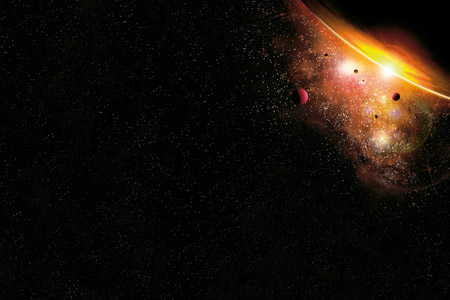
Telling Stories: Science
Issue 100 January 2013
The Muslim contribution to science is foundational to modern civilisation. In Europe, we call the medieval period ‘the dark ages’, but they were only dark for Europe. It was an age of tremendous enlightenment for the Muslim world.
The Muslim contribution to science is foundational to modern civilisation. In Europe, we call the medieval period ‘the dark ages’, but they were only dark for Europe. It was an age of tremendous enlightenment for the Muslim world. We have recognised and given credit to the contributions of Muslim scientists, mathematicians and physicians who laid the foundations for so many technical and scientific innovations, of which modern science builds today, be that within maths, chemistry, medicine, technology and so many other fields of learning.
Developments of a numeric system that we still use today, astrolabes for charting great maps, the maps themselves, our astronomers, our doctors, the creator of surgical instruments Al-Zahrawi, Ibn Sina’s (Avicenna) ‘Canon’ was used until the 17th century in Oxford University. Arabic was ultimately the language of science and technology right up until the late 17th century.
However, one should not sit on one’s laurels and just be proud of one’s history. But recognise that there are individuals who stand on the shoulders of giants, who are inspired by the contribution, influence and innovation of the past. There are individuals who inherit a scientific legacy. People like Dr. Hayat Sindi whose work in the field of biotechnology has received global acclaim. Graduating from King’s College, Cambridge and Harvard MIT, she has been instrumental in building a technology incubation project within the Arab region. And the likes of Muszaphar Sheikh, the Malaysian astronaut, who went into Space with that same spirit of discovery that had led the great Chinese Muslim explorer Zheng He—Admiral of the Chinese Fleet to explore the world. Zheng He’s boat was 440 feet in length, dwarfing that of Christopher Columbus, which stood at a mere 75 feet.
Bookmark this |
|
Add to DIGG |
|
Add to del.icio.us |
|
Stumble this |
|
Share on Facebook |
|
Share this |
|
Send to a Friend |
|
Link to this |
|
Printer Friendly |
|
Print in plain text |
|

Comments
0 Comments